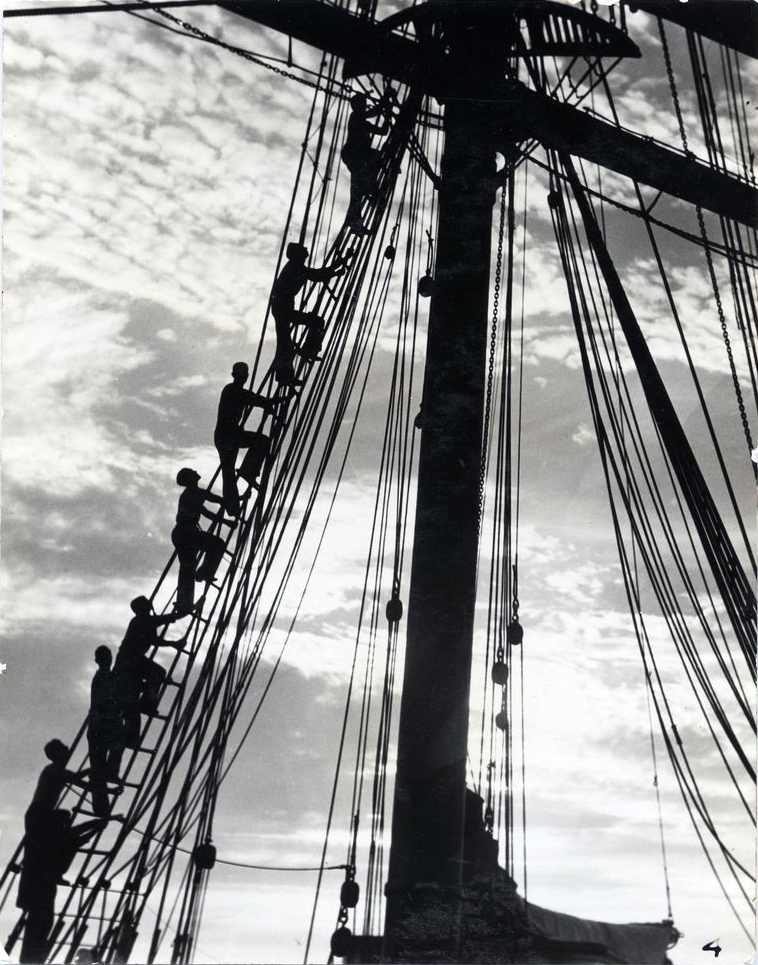By the 1930s, sail training was considered one of the last great adventures. Thanks to the articles and memoirs of Alan Villiers and others, the Erickson Line could continue to carry not only aspiring officers but also those who wanted to test themselves against the Horn for the sake of the adventure. Most were men, but a few women managed to get past the gangway and into the fo'cs'le.
By the 1920s, the Herzogin Cecilie was the most famous square-rigger in the world, and the jewel of Gustaf Erickson’s fleet. This thrifty Finnish shipowner bought many of his vessels after the end of World War I, when many countries that had received them as war reparations and sold them on from the far-flung ports they had been seized in on the outbreak of war. His shrewdness in carrying cargo, passengers, and paying sail trainees made his vessels pay their way as shipping firms folded all around him.
Herzogin Cecilie had been built as a training ship. In 1927 Alan Villiers, a former sailor turned journalist signed aboard, desperate to return to the sea. A fall from aloft in 1921 had rendered him unable to work as a sailor but his job writing for the Hobart Mercury was a cage he longed to escape. A book chronicling the Australian grain race seemed to be the perfect opportunity.
Jeanne Day was an Australian schoolteacher who fell in love with the ships that sailed to and from Port Lincoln. The town organized dances and other social events aboard them as they loaded grain, and Jeanne was so taken with the vessel that she asked to sail to England with them. She was, of course, refused, but she managed to stow away when the Herzogin Cecilie left port. By the time she emerged on deck, a return to port would have cost the vessel the chance to be the first to reach England, so she was signed on as a steward. Villiers saw her as a nuisance and a distraction from his own project, but realized in the end that the publicity she received on the voyage was a useful addition to his story. He told his version in a chapter of his book Falmouth For Orders and ghost wrote a two-part article based on her heavily fictionalized diary for Wide World Magazine called The Girl Stowaway of the Herzogin Cecilie. To Villiers frustration, he began to receive letters from women wanting to go to sea, a place he was adamant that they did not belong. His own hand-picked female sail trainee, Betty Jacobsen, was meant to deter them, and the book he published under her name, A Girl Before the Mast, showcased her boredom and confusion as a trainee.
Women quietly went to sea, though. Lena Ringbom, a Finnish girl from Turku, managed to get a berth aboard the Erickson ship Viking in 1931. She was followed by others, including Annette Brock Davis, whose memoir My Year Before the Mast is in this writer’s opinion one of the finest memoirs of the sail training experience ever printed.
The Thirties really were the sunset of the age of sail, and the inspiration for our own Maritime Park. Karl Kortum, our founder, was a Sea Scout, and he and his best friend, Harry Dring, grew up on the books, articles and newsreels of the era. Dring worked for the old captains employed as shipkeepers in the old Alaska Packers yard in the Oakland Estuary, and Kortum and his friends regularly made the rounds of the vessels moored in Richardson Bay. They searched high and low for a berth in a sailing vessel and managed to get aboard the last American commercial vessel to sail around Cape Horn, the Kaiulani, in 1941. The few journal entries Kortum left in our Maritime Research Center archives tell a tale of adventure and a true love of the sea and ships, and it is no wonder that when Kortum came back to the Bay Area after the Second World War he set to work creating the Maritime Museum, and acquiring the vessels that now make up our collection. Dring joined the Merchant Marine, but on a visit home, Kortum enticed him aboard the newly acquired Balclutha. He started as the first maintenance supervisor soon after. Their colorful, sometimes stormy friendship continued, Kortum ensconced in the top floor of the Maritime Museum, Dring in one of the Eureka pilot houses.
The next installment of this series will chronicle the near breaking of the chain of living sailors that pass the knowledge of ships, sailing, and skill from the last commercial sailors, to the sailors of the present. The Pamir, lost at sea in the 1950s, nearly put an end to sail training and that last voyage certainly was the last time sailing ships carried commercial grain cargoes. The intertwined story of Passat, preserved today in Germany and Pamir, lying somewhere at the bottom of the Atlantic, led to the purpose-built sail training ships of today.
Want to know more? Here are a few more “paper ships” to sail away in:
Annette Brock-Davis. My Year Before the Mast. Toronto, Hounslow Press, 1999.
Kate Lance. Alan Villiers: Voyager of the Winds. Greenwich, National Maritime Museum, 2009.
Sari Maenpaa. A Woman At Sea: Women on the Sailing Ships of Gustaf Erickson 1913 -1937. Nautica Fennica, 1995.
Peter H. Spectre. Give ‘Em Hell Harry! Wooden Boat No. 61, 1983

Pacific Queen (built 1886; ship, 3m) view aloft off Pt. Loma, 1935 Jul 11
Aloft to furl, off Point Loma, evening of July 11, 1935.
U. S. National Park Service
Permission must be secured from the individual copyright owners to reproduce any copyrighted materials contained within this website. Digital assets without any copyright restrictions are public domain.
